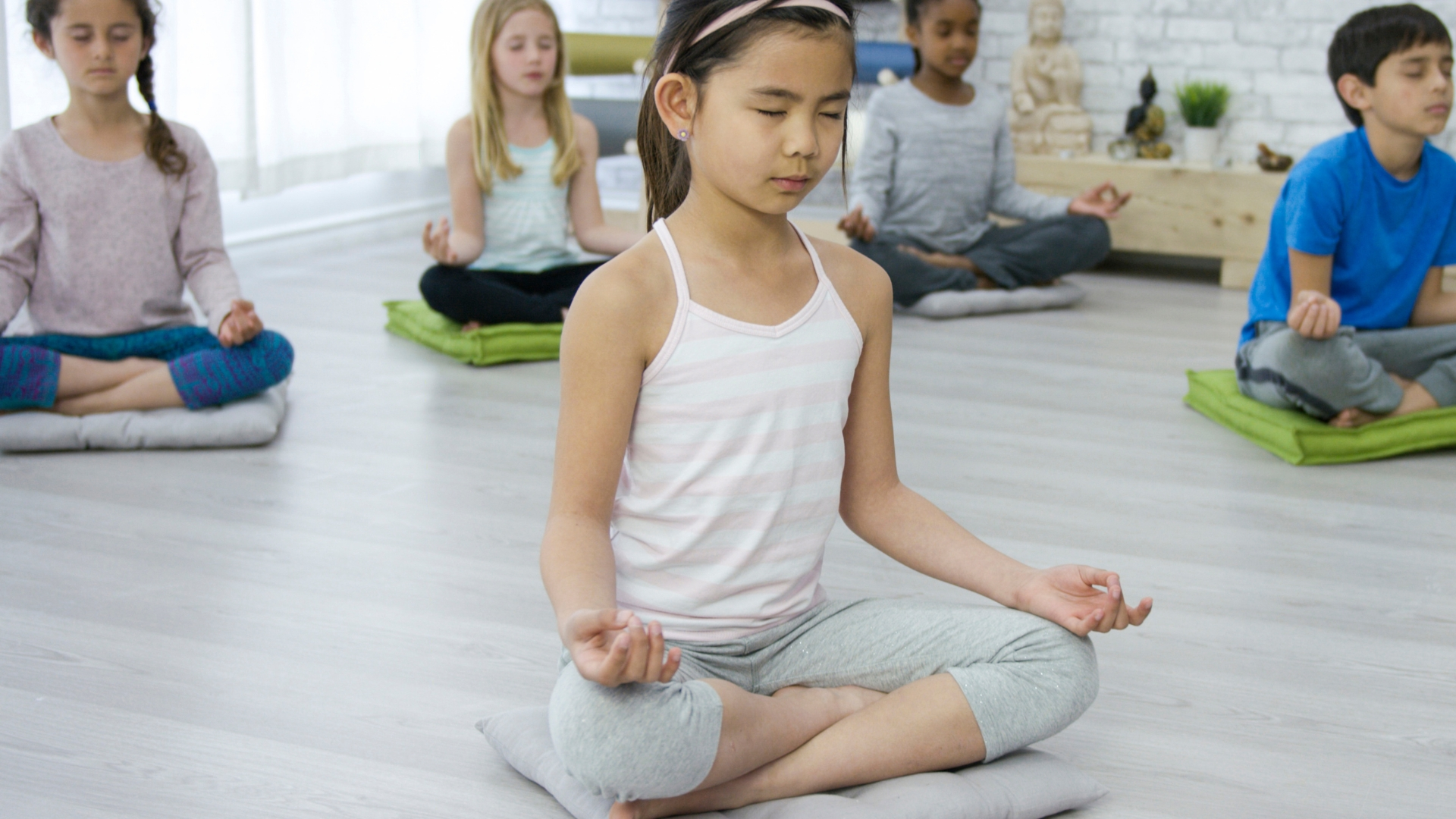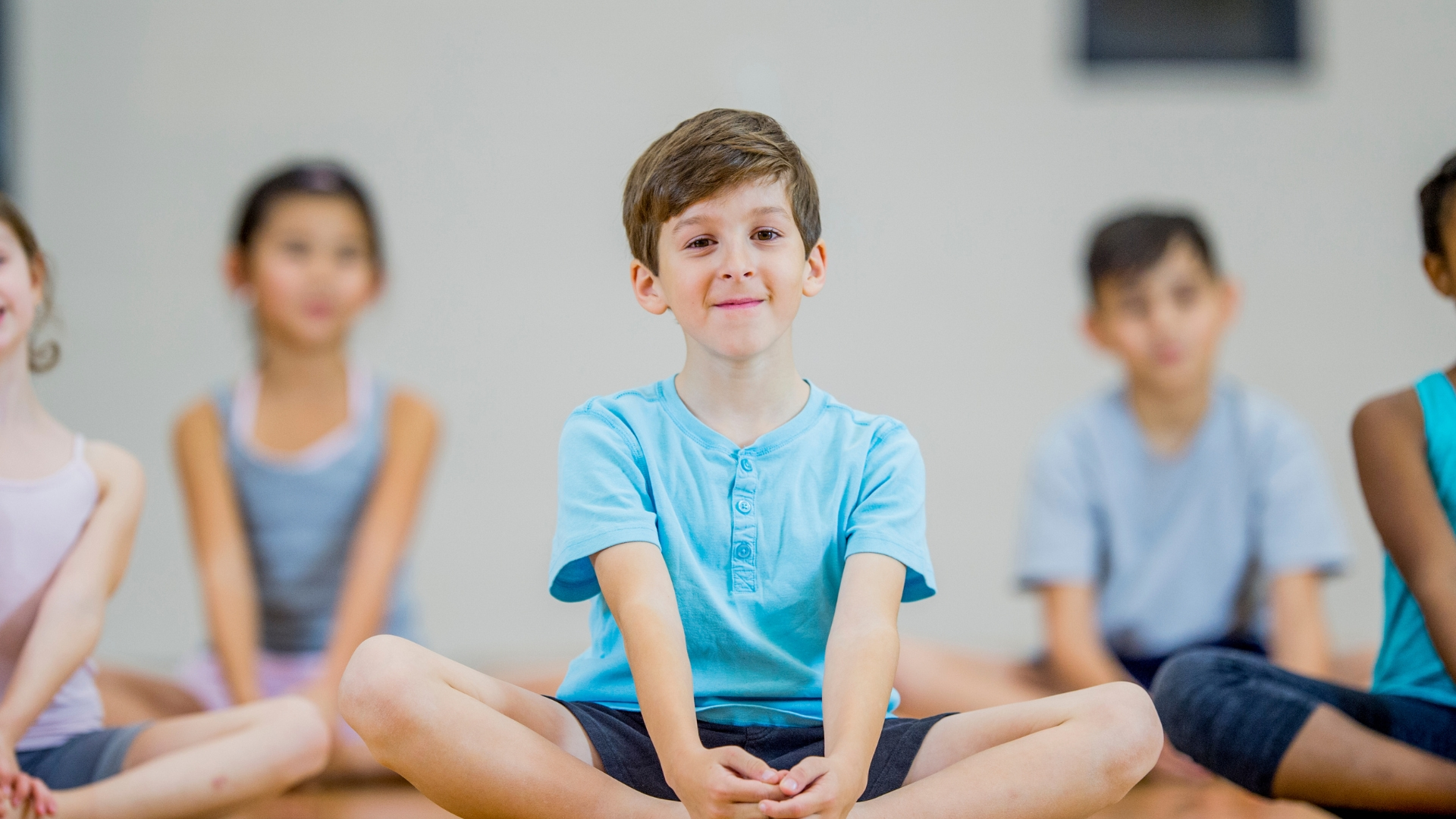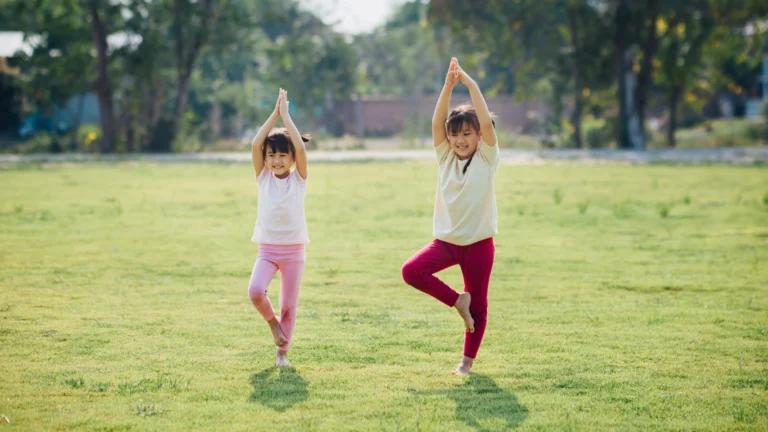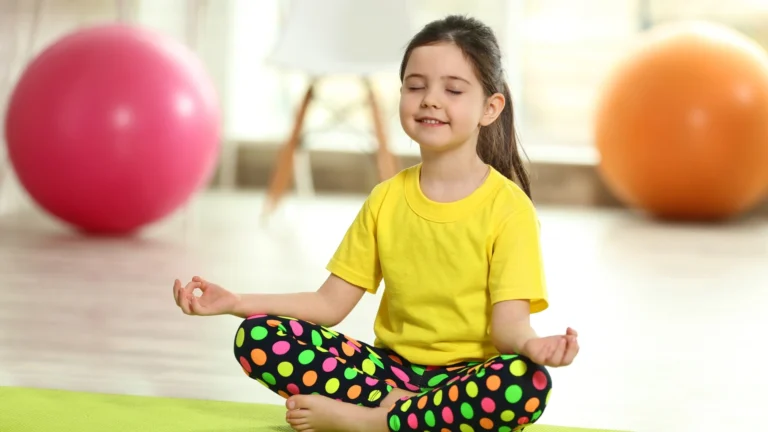Why is Yoga Important for School Children?
Introduction:
In the bustling world of modern education, where academic achievements often take center stage, it’s crucial to recognize the significance of holistic development for school children. While traditional subjects are undoubtedly important, fostering physical and mental well-being is equally vital. By introducing yoga into the lives of schoolchildren, educators and parents alike can provide them with a well-rounded foundation that extends beyond mere academic prowess. Yoga, an ancient practice with deep roots in India, has emerged as a powerful tool to nurture both the bodies and minds of school children.
In an era where sedentary lifestyles and screen time are on the rise, incorporating yoga into the school curriculum becomes a proactive measure to resist issues related to obesity and poor posture. Additionally, the incorporation of mindfulness and meditation cultivates emotional resilience, stress management, and improved concentration, essential for navigating academic pressures.
In this article, we explore the importance of yoga in the lives of schoolchildren and how it contributes to their overall development.

Health Benefits:
The primary reason schools offer yoga classes to children is to maintain their physical health. Yoga offers a plethora of health benefits. It is a low-impact activity that encourages physical fitness without the risk of injury associated with more vigorous exercises. Regular practice of yoga poses, or asanas, improves flexibility, strength, and balance among children. These physical benefits not only promote general well-being but also contribute to better posture and alignment.
Additionally, yoga places a strong emphasis on breath control through various pranayama techniques. This enhances respiratory health by increasing lung capacity and oxygen intake. The conscious focus on breathing aids in reducing the shallow, anxiety-inducing breathing patterns that many individuals adopt, especially in stressful situations.
Moreover, a consistent yoga practice can help strengthen the immune system. The gentle movements and poses stimulate the lymphatic system, which plays a crucial role in maintaining immunity. A robust immune system can lead to reduced illness and absenteeism among schoolchildren, ensuring they remain healthy.
Discipline and Self-control:
Yoga instills discipline and self-control in students in several ways. Firstly, it introduces a sense of routine into their lives. Attending regular yoga sessions, following a structured sequence of asanas, and adhering to class schedules all contribute to a more organized and disciplined lifestyle. This can extend beyond the yoga class into their academic and personal lives, helping them manage their time effectively.
Furthermore, yoga encourages self-discipline. It teaches children to listen to their bodies, be patient with their progress, and practice non-judgment towards themselves and others. This can translate into better self-control, making it easier for students to manage their behavior, emotions, and impulses, both in and out of the classroom.
Memory and Focus:
Improved memory and focus are key cognitive benefits of practicing yoga. The practice of asanas and concentration on breath requires a significant amount of mental presence. This, in turn, enhances memory and cognitive skills. The mindfulness cultivated through yoga encourages students to be present in the moment, fostering a state of awareness that can lead to better memory retention and recall. By being fully engaged in the task at hand, students can optimize their learning experiences in school.

Moreover, yoga promotes mental clarity by reducing mental clutter. It helps children manage the stress and distractions they may encounter in their daily lives, allowing them to concentrate better on academic tasks. As a result, students who practice yoga may exhibit improved attention spans, which can contribute to better classroom performance and learning outcomes.
Stress Relief:
One of the most significant advantages of yoga classes in schools is its stress-relief capabilities. The relaxation and mindfulness techniques used in yoga, such as deep breathing and meditation, are effective tools for reducing stress and anxiety among school children. In today’s fast-paced and demanding educational environment, stress is a common issue that can affect a child’s overall well-being.
Online yoga classes help children learn how to relax, manage their emotions, and develop emotional balance. By creating a safe space for self-reflection and self-acceptance, yoga equips students with the tools to cope with stress more effectively. This can lead to improved mental health, reduced absenteeism due to stress-related illnesses, and an overall increase in the well-being of school children.
Fun and Social Interaction:
Lastly, making yoga enjoyable for school children is essential to ensuring their active participation and engagement. Incorporating creative, playful elements into yoga sessions, especially for younger students, can make it a fun and exciting experience. Using games, storytelling, and music can help capture the interest and imagination of the children, turning yoga into a joyful activity.
Social Skills and Lifelong Skills:
Yoga classes for schoolchildren often take place in a group setting. This provides an excellent opportunity for children to develop social skills, including cooperation, teamwork, and effective communication. The collaborative nature of many yoga poses and activities encourages children to interact positively with their peers and build strong, supportive relationships.
Beyond social skills, yoga imparts life skills that are invaluable for children’s overall well-being. It teaches self-discipline and responsibility through regular practice, promoting better time management and goal-setting abilities. Furthermore, online yoga classes for kids foster a sense of self-acceptance and body positivity, encouraging children to appreciate their bodies for what they can do rather than focusing solely on appearance. This positive self-image can boost self-esteem and reduce the negative impact of body image issues. Incorporating yoga into a child’s life creates a foundation for lifelong practice, helping them navigate the complexities of the modern world with greater resilience and self-awareness. It not only enhances their social and life skills but also nurtures their physical and mental well-being, making it a valuable addition to any educational curriculum.
Yoga as a Synergetic Approach:
Physical education (PE) is a standard component of school curricula, focusing on physical fitness and sports. Integrating yoga into PE programs creates a well-rounded approach to physical health. Yoga complements traditional sports by promoting flexibility, balance, and relaxation, reducing the risk of injuries, and aiding in recovery after more strenuous activities.

To have a better understanding of yoga classes for kids, read our blog about the Top 15 Benefits of Yoga for Kids: Nurturing Mind, Body, and Spirit.
Challenges and Concerns:
While yoga offers numerous benefits to school children, it has its challenges and concerns. These include potential resistance from traditionalists who may view yoga as a departure from academic rigor. To address these concerns, it’s important to emphasize that yoga complements academics by nurturing a child’s physical and mental well-being, ultimately enhancing their capacity to excel in their studies.
These challenges should be acknowledged and addressed to ensure a positive and effective experience for children:
- Physical Limitations
- Concentration Difficulties
- Peer Comparison
- Resistance to New Practices
- Cultural or Religious Sensitivities
- Maintaining Consistency
- Teacher Qualifications:
- Adequate Resources
- Engagement and Fun
- Parental Support
While yoga offers a synergetic approach to the well-being of school children, it’s important to recognize and address the challenges they may face. By understanding and proactively mitigating these challenges, schools can create an environment where children can fully benefit from yoga as a means of physical and mental development.
Conclusion:
In conclusion, yoga holds a pivotal role in the education of school children. It contributes to their physical fitness, mental and emotional well-being, concentration, and social skills. Yoga equips children with essential life skills that will serve them not only in school but throughout their lives. Integrating yoga into the school curriculum fosters a holistic approach to education, nurturing healthy bodies and minds and enabling children to thrive academically and beyond. It’s time to recognize that education is not solely about what children learn from textbooks but also about how they learn to live healthy, balanced lives.




 WhatsApp us
WhatsApp us